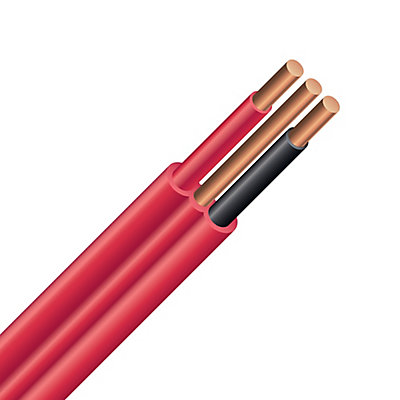redikillowatt
Member
- Location
- TX
My homestead got some water in the house in recent TX storm. I've run across several people citing articles that if standard NM-B residential romex is under water - at all, for any time, the paper wrapping can get wet & "eventually ruin, cause corrosion / problems, etc., with conductors, so wiring should be replaced.
However, I can't find appropriate code for what *actually* needs to be tested, how - or deciding the length to replace.
Start slicing test sections of wire open & see how far the paper wrapping wetness extends, if at all?
Then what - cut a few inches above the paper wetness, set a box inside the wall & run new wire to the outlet boxes?
The lower drywall sections & insulation are already removed. At the peak, maybe 8" water in the house - based on 8" x 16" cinder blocks on end, elevating furniture were only wet less than 1/2 their length.
Morning after water receded, I looked in some std height wall outlets. No sign of moisture, silt or flood water debris in the boxes.
While drywall was wet & a little water left on floors. So, I'm not at all sure the water level got to most outlets. A couple of outlets near the floor - probably got water.
No salt or brackish water involved. Very little if any silt, mud left on floors - surprisingly clean flood water.
What does NEC or TX say about checking for wet paper wrapping and recommendations how far above the wetness to replace wiring?
I'd be really surprised if fresh water, this clean would "destroy" the copper conductors. But maybe...
Thanks.
However, I can't find appropriate code for what *actually* needs to be tested, how - or deciding the length to replace.
Start slicing test sections of wire open & see how far the paper wrapping wetness extends, if at all?
Then what - cut a few inches above the paper wetness, set a box inside the wall & run new wire to the outlet boxes?
The lower drywall sections & insulation are already removed. At the peak, maybe 8" water in the house - based on 8" x 16" cinder blocks on end, elevating furniture were only wet less than 1/2 their length.
Morning after water receded, I looked in some std height wall outlets. No sign of moisture, silt or flood water debris in the boxes.
While drywall was wet & a little water left on floors. So, I'm not at all sure the water level got to most outlets. A couple of outlets near the floor - probably got water.
No salt or brackish water involved. Very little if any silt, mud left on floors - surprisingly clean flood water.
What does NEC or TX say about checking for wet paper wrapping and recommendations how far above the wetness to replace wiring?
I'd be really surprised if fresh water, this clean would "destroy" the copper conductors. But maybe...
Thanks.


